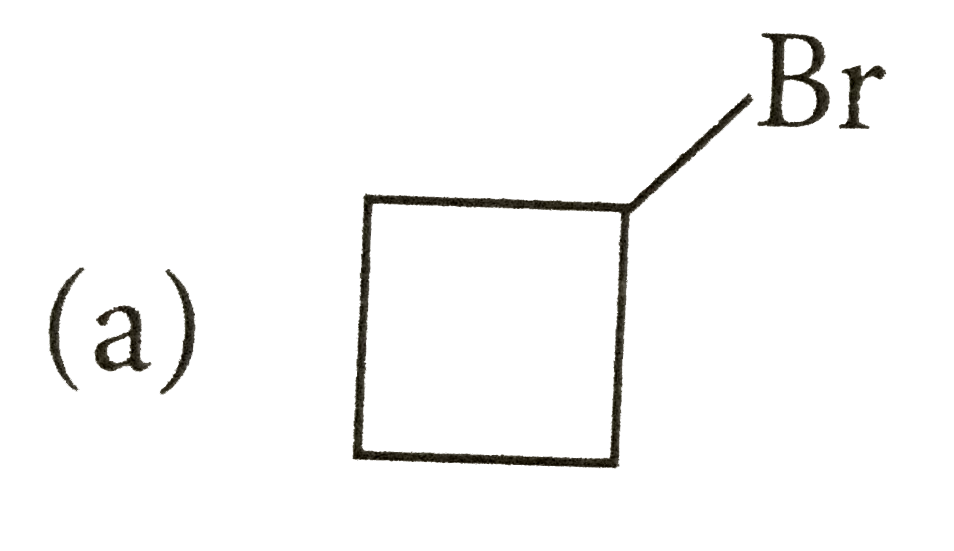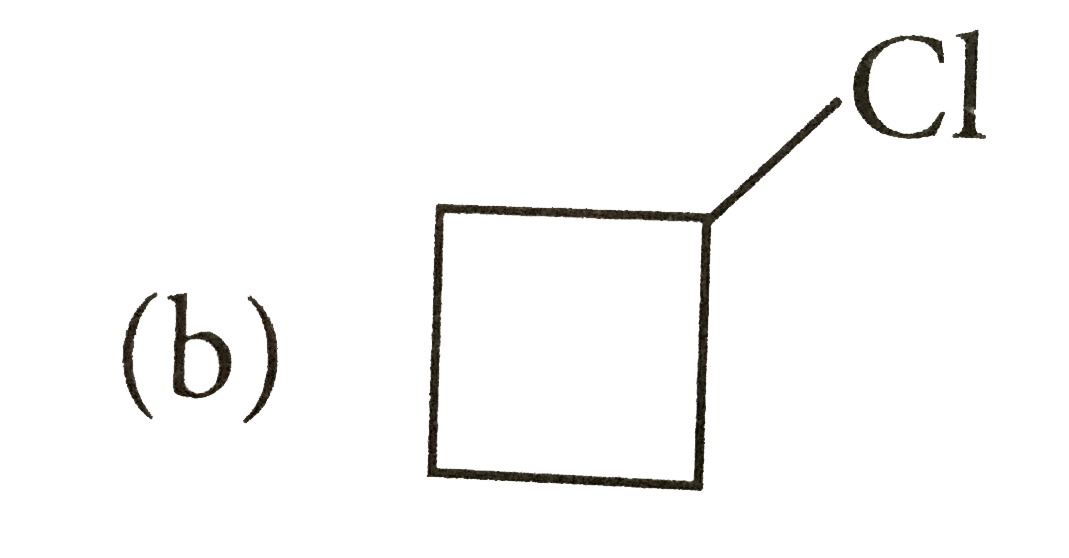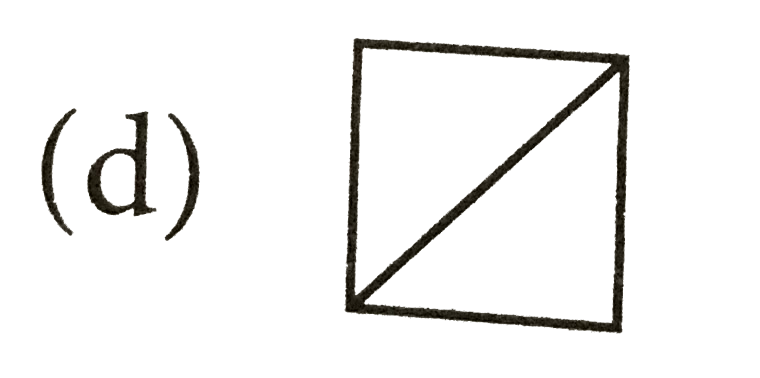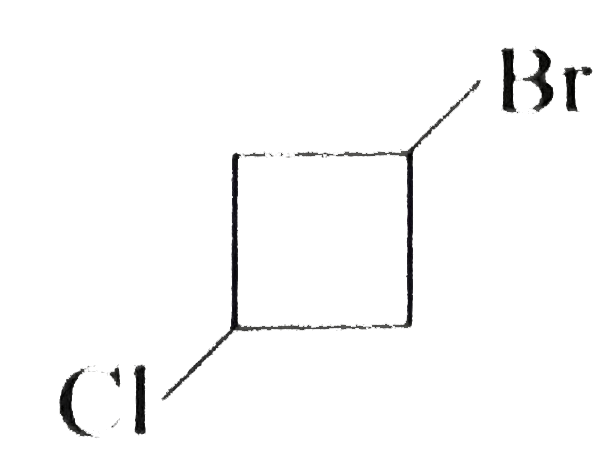1-Bromo-3-chlorocyclobutane is treated with two equivalents of Na, in the presence of ether. Which of the following compounds will be formed.




The correct Answer is:D
To solve the question regarding the reaction of 1-bromo-3-chlorocyclobutane with two equivalents of sodium in the presence of ether, we can follow these steps:
Step 1: Draw the Structure of 1-Bromo-3-Chlorocyclobutane
1. Identify the structure: Cyclobutane is a four-membered carbon ring. The "1-bromo" indicates that a bromine atom is attached to the first carbon of the ring, and "3-chloro" indicates that a chlorine atom is attached to the third carbon.
2. Draw the structure: The structure can be represented as follows:
Cl|C1−C2||C4−C3|Br
Step 2: Understand the Reaction Mechanism
1. Wurtz Reaction: The reaction described is a Wurtz reaction, which involves the coupling of alkyl halides using sodium in dry ether.
2. Free Radical Formation: When 1-bromo-3-chlorocyclobutane is treated with sodium, the halide (Br or Cl) leaves, forming free radicals.
Step 3: Formation of Free Radicals
1. Halide Elimination: The bromine and chlorine atoms will be replaced by sodium, forming sodium bromide (NaBr) and sodium chloride (NaCl).
2. Free Radical Generation: The elimination of the halides leads to the formation of two free radicals on the cyclobutane ring.
Step 4: Coupling of Free Radicals
1. Radical Coupling: The two free radicals can couple together by sharing their unpaired electrons, forming a new bond.
2. Final Product: The resulting compound will be a dimer of cyclobutane, specifically bicyclobutane, as the two radicals combine.
Step 5: Identify the Correct Compound
1. Final Structure: The final product formed from the reaction is bicyclobutane.
Conclusion
The compound formed from the reaction of 1-bromo-3-chlorocyclobutane with two equivalents of sodium in dry ether is bicyclobutane.
1. Identify the structure: Cyclobutane is a four-membered carbon ring. The "1-bromo" indicates that a bromine atom is attached to the first carbon of the ring, and "3-chloro" indicates that a chlorine atom is attached to the third carbon.
2. Draw the structure: The structure can be represented as follows:
Cl|C1−C2||C4−C3|Br
1. Wurtz Reaction: The reaction described is a Wurtz reaction, which involves the coupling of alkyl halides using sodium in dry ether.
2. Free Radical Formation: When 1-bromo-3-chlorocyclobutane is treated with sodium, the halide (Br or Cl) leaves, forming free radicals.
1. Halide Elimination: The bromine and chlorine atoms will be replaced by sodium, forming sodium bromide (NaBr) and sodium chloride (NaCl).
2. Free Radical Generation: The elimination of the halides leads to the formation of two free radicals on the cyclobutane ring.
1. Radical Coupling: The two free radicals can couple together by sharing their unpaired electrons, forming a new bond.
2. Final Product: The resulting compound will be a dimer of cyclobutane, specifically bicyclobutane, as the two radicals combine.
1. Final Structure: The final product formed from the reaction is bicyclobutane.
The compound formed from the reaction of 1-bromo-3-chlorocyclobutane with two equivalents of sodium in dry ether is bicyclobutane.
Topper's Solved these Questions
- BOOK - NCERT FINGERTPS ENGLISHCHAPTER - HYDROCARBONS EXERCISE - Assertion & Reason15videos
HYDROCARBONS
- BOOK - NCERT FINGERTPS ENGLISHCHAPTER - HYDROCARBONS EXERCISE - Alkanes25videos
HYDROCARBONS
- BOOK - NCERT FINGERTPS ENGLISHCHAPTER - HYDROCARBONS EXERCISE - Assertion And Reason15videos
HYDROCARBONS
- BOOK - NCERT FINGERTPS ENGLISHCHAPTER - EQUILIBRIUM EXERCISE - Assertion And Reason15videos
EQUILIBRIUM
- BOOK - NCERT FINGERTPS ENGLISHCHAPTER - HYDROGEN EXERCISE - Assertion And Reason15videos
HYDROGEN
Similar Questions
Knowledge Check
- Question 1 - Select One
Which of the following pairs of reagents will not form ether?
AC2H5Br+C2H5ONaBC2H5Br+C6H5ONaCC2H5Br+(CH3)2CHONaDC2H5Br+CH3COONa - Question 2 - Select One
A mixture of 1-iodoethane and 1-iodopropane is treated with sodium metal and dry ether to carry out Wurtz reaction. Which of the following hydrocarbons will be formed?
APropane+HexaneBEthane+PropaneCButane+PropaneDButane+Pentane+Hexane - Question 3 - Select One
Generally transition elements form coloured salts due to the presence of unpaired electrons. Which of the following compounds will be coloured in the solid state ?
AAg2SO4BCuF2CZnF2DCu2Cl2
Which of the following compounds form salt with NaHCO3?
View SolutionWhich of the following reaction does not form an ether ?
View SolutionWrite down structure of the following compounds:
3-bromo-1-propeneView SolutionWrite down structure of the following compounds:
3-bromo-1-propyneView SolutionA compound X with molecular formula C7H8 is treated with Cl2 in presence of FeCl3. Which of the following compounds are formed during the reaction?
View Solution


 when treated with two equivalents of sodium in dry ether gives:
when treated with two equivalents of sodium in dry ether gives: